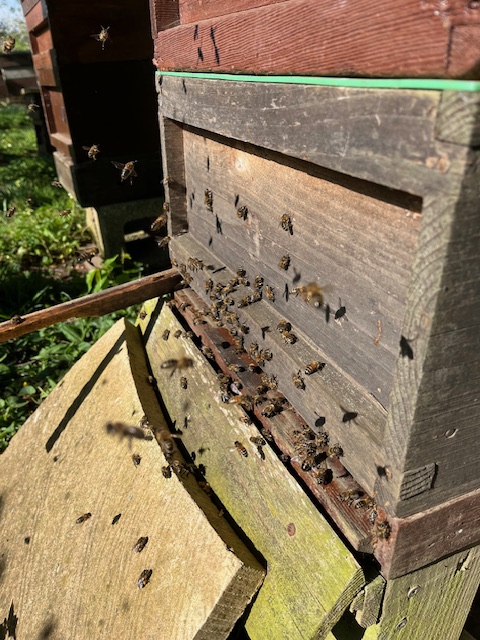Title Photo: Drone Layer
At the start of the month we were all seeing ground frosts which were keeping colonies restricted to hives especially early in the morning but by the end of April nectar was flowing in and a temperature of 20 °and no rain.
But those of us that sat up Asian Hornet baits were pleased to see only Queen Wasps and European Hornets feeding on the wicks. Hence the picture of a Queen Hornet( European) on my Xmas Cactus.
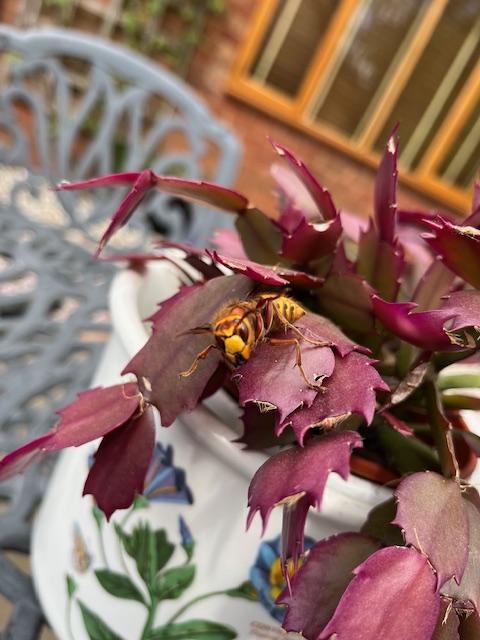
The good weather allowed us to take an early look into our colonies and I found at least two Drone Layers, clearly bad mating last summer.
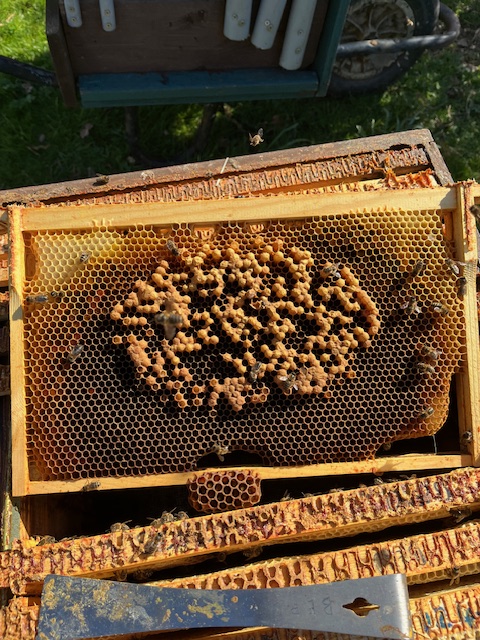
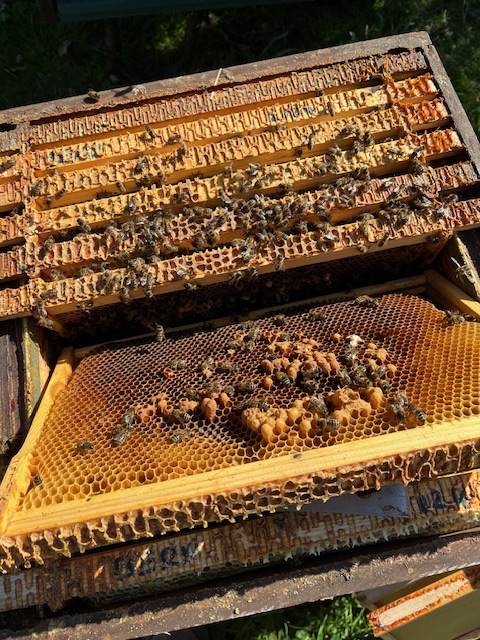
In a normal spring they would have been doomed but I just happened to have two very small Nucs which had only just made it through the winter.
What I did was unite the two by putting weak colony on the site of the Drone Layer and throwing all the bees (old winter bees) onto a sheet at the front of the hive .
Then I gave them a little liquid feed and left alone for two weeks.
Later on in the month examined and all’s well. Queen’s laying well eggs, grubs and brood everywhere.
Had to get two supers on each hive as nectar was flowing in and removed combs of food from positions 1 and 11 in the brood chamber to give the Queens room to expand.
Replacing comb taken out with foundation or drawn comb, but not splitting the brood with these combs as it’s still too cold at night .
It’s time to start those weekly checks if you can, to prevent swarming and clean up hives, especially floors, ready for the busy season ahead.
Some hives are already into swarming mode so if “charged Queen cells” are discovered it’s time to split the brood chamber into two or three.
If I cannot find the Queen, often happens, (must mark more Queens) leave a comb with one charged Queen cell on the original site and fill the rest of the Brood Chamber with drawn deep comb or foundation. Then leave them to get on with it.
The original Brood Chamber is moved elsewhere in Apiary so all the older flying bees go back to the original site, then leave alone for a couple of days.
On returning, young bees will have developed “charged Queen cells” and it is then a lot easier to find the Queen and put her into a Nuc with a couple ofcombs of food and brood.
Then you have a choice whether to split the colony with sealed Queen cells or find a nice big one and destroy the rest.
Yes I know you go from one strong hive ready to swarm, to three colonies but you are breeding your own Local Queens and can unite back down come the Autumn.
As always preparation is the name of the game with Beekeeping and spare equipment, just in case, is a must. If not bees will certainly get ahead of you and move home!
The end of the month and the weather is still warm. Oil Seed Rape in full flower, Hawthorn out but a cold spell on its way.
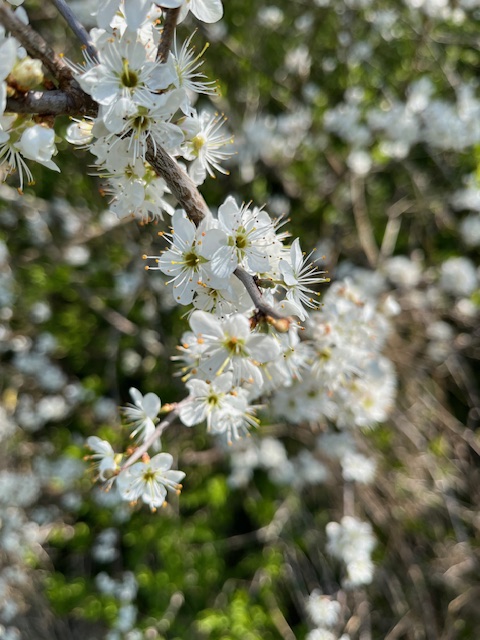
This will confine colonies to their hives keeping brood warm as they increasingly expand. Make sure they have plenty of room or you’ll be chasing or losing swarms early in May.
